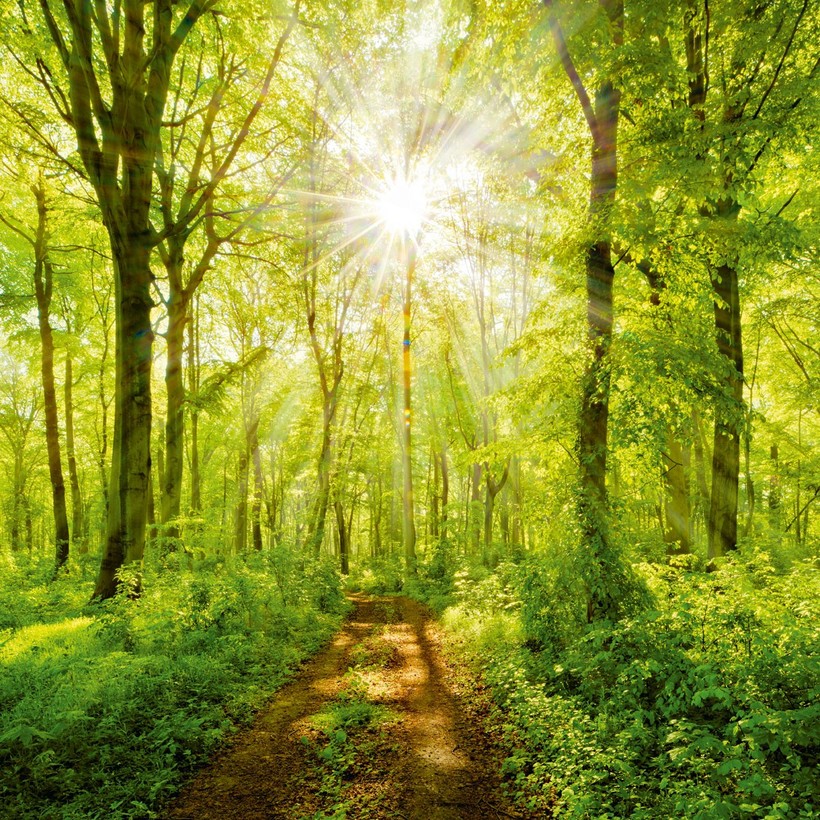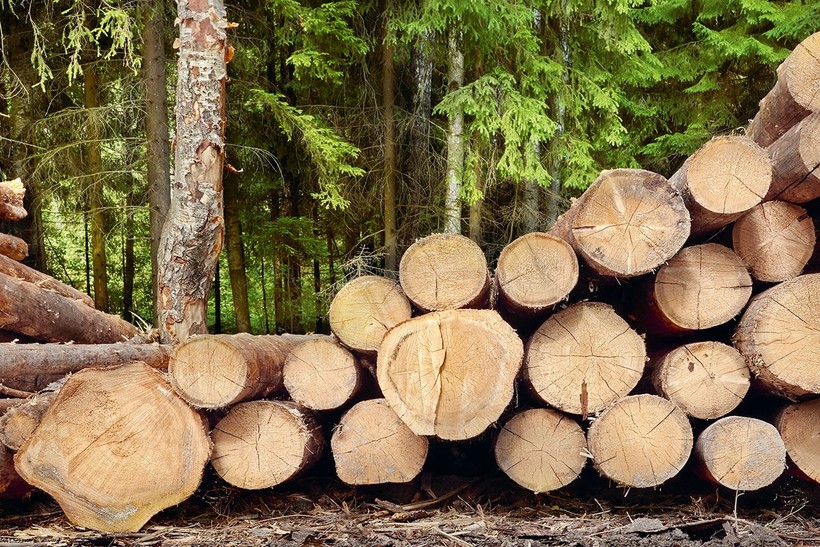A Bio-Based Future
The whole world is already embarking on a journey toward a bioeconomic future, implementing and designing innovative approaches, technologies and business models, as well as accumulating a relevant knowledge base. Russia, by far the largest single deposit of bioresources, has not yet been actively engaged in the global transition processes. So here is what needs to be done to accelerate Russia’s contribution and expansion beyond the bioeconomic frontier, suggests Ekaterina Nesmeeva.

Today, the vast majority of vitally
important products all around us originate from
oil. is has irreversible consequences for mankind
as petroleum-based products are no doubt the
main polluter and emitter of greenhouse gases.
Meanwhile, the key principle of bioeconomy is to
integrate bio-based products into the production
cycle in order to step away from dependence
on oil and petrochemicals, and make way for
independent renewable new materials, such as
cellulose. Bioeconomics have been spreading
around the globe as a new wave of economic
development concept following the digital one,
which makes it among the most advanced forms of
economic development.
Bioeconomy is not just a concept relating to
sustainability; it oers a whole new era based on
dierent resource extraction and use principles.
e global trend towards sustainability has led to
a general rethinking of how we consume natural
resources and produce goods. Bioeconomics
are based on advanced biological technologies
embedded in market mechanisms that include
responsible consumption, regulatory incentives,
nancial instruments and solutions.
e forest-based bioeconomy oers one of
the best developed cases for strengthening the
bioeconomy strategy.
Forests possess a stockpile
of biomass that can easily serve as a foundation
for a bioeconomy. Most importantly, forest
resources constitute an e
cient and renewable
raw material for bioproducts, being are partially or
completely degradable. ere are almost 350 types
of product that can be sustainably and responsibly
produced from forest-based raw materials. What is
more, forests are home to various types of insect,
which can be gathered and farmed as a more
environmentally friendly and e
cient sources
of protein, organic and bio dyes, as well as raw
material for medicines. All these products come
from a renewable resource, and most of them can
be reused and recycled.
Forests are a multifunctional bioeconomic
resource base at all levels from energy development,
production of innovative construction materials,
products of the chemical, pharmaceutical and
medical industries, to production of nanocellulose
and other cutting-edge materials. Nanocellulose
and other innovative materials are currently in the
spotlight. ey are now being adopted by many
producers for manufacturing everyday goods and
necessities. Among the leaders is International
Paper, a major global supplier of cellulose
bre. Its
innovative
bre solutions across diverse lines of
production cycles provide customers worldwide
with sustainable innovative products.
KEY TO SUSTAINABILITY
The global scale of environmental problems has a
direct impact on economic sustainability and the
proliferation of established patterns of natural
resource use. At the core of the bioeconomy are
biotechnologies and innovations. Both make
it possible to use natural resources efficiently,
avoid depletion and reduce harmful effects
on the environment. The shift from linear
economies based on non-renewables is most
effective when approached through a synergy of
bioeconomy and circular economy. These two
represent completely different practices but are
mutually reinforcing concepts.
The circular economy and bioeconomy
together reduce raw material use, with the
bioeconomy reinforcing it by promoting
renewable use rather than depletion, and
reuse of products and recycling so that the
bioeconomy replaces products originally
produced sustainably.
The need to promote biotechnology
and strengthen the bioeconomy as a major
technology platform arises from the fact that it
addresses a range of environmental, social and
demographic issues. As a result, bioeconomic
principles directly affect the majority of ESG,
CSR and most importantly SDG.
The structural units of the bioeconomy
can be outlined as comprehensive segments
such as textiles, forestry, wood processing and
paper, fisheries, food, chemicals, medicine and
pharmaceuticals, energy and fuel production.
Widespread use of the bioeconomy accelerates
achievement of a sustainable environment.
In order to make the link explicit, bioeconomy
products can be directly linked to SDG goals.
Bioeconomy principles especially fit the
SMEs, particularly in rapidly developing
economies. For example, take the gathering,
selecting and farming high-protein insect
species that help the fight against hunger, as
outlined in Goal 2. And the forests indirectly
support this goal by preserving fertile soils for
harvesting.
Development, promotion and use of bioenergy
and biofuels allow access to affordable and clean
energy, as set in Goal 7. This, in turn, allows
for development of a more socially orientated
environment through creation of local jobs,
avoiding population and capital concentration
in urbanised environments.
By avoiding concentration of population
and capital in urban areas, the bioeconomy
contributes to living wages and inclusion
of low- and medium-skilled workers, which
directly addresses Goals 9, 11 and 15. Efficient
use of natural resources, as well as reuse of
raw materials in a manner that minimises
environmental damage, makes it possible not
only to use raw materials rationally, but also
adds to slowing down climate change, which
are Goals 12 and 13.
All sustainable development goals are
interlinked, as are many processes in the
bioeconomy. And direct improvements
produced by innovation will inevitably have
a positive impact on the other Goals. The
bioeconomy greatly contributes to the UN SDG
and adds to most, if not all, of them. Whereby
engaging in both allows efficient and responsible
legislative planning and policy-making on both
the global and national levels.
Most states have already joined the process
of bioeconomic development, having started
by addressing the main legislative barriers.
Major countries in different parts of the
world, such as the United States, Australia
and Malaysia, recognise the importance of
developing a relevant knowledge base for policy
implications. Identifying the bioeconomy
as a key area on which state agencies should
focus their efforts and dedicate resources, they
support projects and promote action plans for
implementation of the principles of sustainable development, biotechnologies and cyclical use
of resources in the economy.
EUROPEAN FOREST FRONTIER
Th e European Bioeconomy alone is estimated to
contribute almost €3 trillion to European GDP
and provide jobs to over 20 million people. e
food industry is the biggest contributor to the
EU bioeconomy, accounting for close to half the
whole pie, with agriculture, forestry and wood
processing combined constituting 26%. Over
1 million new jobs within the bioeconomy are
expected to be created by 2030. On average,
the bioeconomy represents about 9% of the EU
economy in terms of employment, new jobs and
turnover.
Europe, the Nordic states in particular, are
at the forefront of bioeconomic developments,
especially in the view of the recently updated
European Bioeconomy Strategy. Originally
adopted in 2012, it came out together with 14
clear steps reflecting European policy changes
to support all spheres of the bioeconomy. It
provided European member states with a solid
base for developing national initiatives in the
field.
Among those at the frontier of the European
bioeconomy is Germany, which set the National
Bioeconomics Research Strategy 2030.
Established as early as 2011, it focuses on the
challenges currently facing states. It also stimulates
scienti
c activity towards interdisciplinary work
and international cooperation and accelerates its
practical implementation.
Th is is key to creating a knowledge-based
bioeconomy. e most recent example is Finland.
By rolling out a programme for up to 2035,
the country is looking to apply restrictions on
use of domestic primary raw materials, boost
resource productivity and lifecycle, and materials’
circulation rate.
In fact, forests and the forestry industry are seen
as the backbone of the EU Bioeconomy. Also, this
sector is considered as the primary contributor to
climate change mitigation. Forests cover almost
40% of EU hardland. Not surprisingly, during
development of the bioeconomy, European
countries have paid particular attention to forestbased bio-products. e best global practices in
forest-based bioeconomics are found in Finland, Sweden, Estonia and Latvia, all of them also being
members of EUSTAFOR.
The clear trend in the forestry industry’s
development is an increasing bias toward
multifunctional and more e
cient use of
raw materials. is includes greater use of
biodegradable fuels and cellulose products
as an energy source, as well as production of
innovative construction materials made of wood
and composite materials. As for the chemical,
pharmaceutical and medical industries, it is
increasingly about manufacturing nanocellulose
and other revolutionary materials with a stable
life cycle, but with characteristics equivalent to
those of common, less environmentally friendly
substitutes.
STORY OF MULTY-STOREY
The forestry and wood processing industries
account for almost 10% of the total turnover
of the EU bioeconomy (excluding pulp and
paper). They create 2.2 million jobs and
generate a total of €200 billion in sales, with
construction as the key contributor. Building
and construction processes contribute to almost
a third of global c arbon dioxide emissions by
consuming vast quantities of non-renewable energy and materials. The eco-efficiency of
wood materials is subject to wood storing
carbon dioxide absorbed when growing. If not
removed from a forest, a mature tree releases
all the accumulated carbon dioxide back into
the atmosphere when it rots. Cut and used in
manufacturing a product (not burned), wood
is long-term carbon dioxide storage.
As production of one tonne of cement leads to
emission of about one tonne of carbon dioxide,
a single tree not only preserves up to 900 kg of
carbon dioxide per tonne but also retains up to
two tonnes of CO2. us, replacing concrete with
wood in construction would prevent emission
of three tonnes of carbon dioxide per tonne of
material.
No wonder multi-storey wooden construction
is one of the fastest-growing sectors of the global
economy, likely to double to over $160 billion by
2025. Innovative wood construction materials
have many advantages. ey are environmentally
friendly and sustainable across their life cycle due
to their renewability and recyclability. Use in
construction of innovative wood-based materials
such as CLT panels has an average annual growth
of 31%, so it stands among the fastest-growing
segments of the market.
Sweden, Finland, Norway, along with the
UK and the USA, have been leading the
transformation of the construction industry
with multistorey buildings made of innovative
wood panels. Among these are churches, schools,
university campus buildings, o
ce buildings,
hotels and apartment blocks. Overall, the process
of switching to wood will improve the urban
environment quality through evolution of new
architectural forms and design solutions, forestry
and responsible resource extraction. It will also
create new jobs and sustainable production
facilities.
SLEEPING BEAUTY TO AWAKE
Russia, with its 814.9 million hectares covered by
mainly birch and pine forest, is actually home to
55% of all conifers, which make up almost 11%
of the global biomass. It remains the sleeping
beauty of the emerging global bioeconomy. Yet,
Russia is still content with a disproportionately
small share of the global market as compared to
the country’s existing resource base.
Although there is clear evidence that both
private and public sectors are taking action to
improve the situation. On the one hand, in
2012, the Russian government made explicit
the importance of developing the bioeconomy at the national level by approving the State
Coordination Programme for the Development
of Biotechnology, in Russia called BIO-2020.
en a team of experts established a technological
platform called BioTech2030, a non-commercial
scienti
c and technical partnership that, among
other areas, focuses on forest biotechnology.
Establishment and promotion of such partnerships
are in line with the global trend. Not only do they
act as research and development bodies but also
encourage international cooperation programmes
and projects.
On the other hand, the private sector’s response
can be illustrated by the case of IKEA in Russia.
Ingka Russia, which runs both IKEA and MEGA
malls in Russia, established its global goals
applicable to their domicile businesses. ese aim,
by 2030, to achieve zero waste and 100% circular
and climate positive status. e achievements are
to be powered by fully renewable energy sources
and increasing energy e
ciency, enable peopleorientated policies, promote wellbeing among
clients and employees by having co-worker and
customer zero-emission footprints.
Forests are a crucial instrument in reaching
these ambitious goals. e vast majority of
international companies and corporations have
adopted measures for achieving sustainable
practices, guided by sustainable development
goals. And IKEA is no exception. Along with other
industry giants, the company became interested in
using responsibly sourced raw materials. So, more
than 40 m hectares of forests are under voluntary
FSC-certi
cation, while the Russian government
recently strengthened policies with respect to
forest and wood products. IKEA is among the
founders of the FSC and contributes greatly to
spreading non-compulsory forest certi
cation in Russia. is, in turn, allows Russia to safeguard its
position in the top-
ve sourcing countries for the
company. IKEA has also launched a programme
of take-back pilots in 2019. According to the
initiative, approximately 70% of the waste from
stores being recycled, and existing closed loops in
cardboard waste in the Moscow and St Petersburg
areas being reinforced.
Clusters are also recognised as an e
cient form
of cooperation for bioeconomic development.
In 2018, an initiative was launched in the
Leningrad Region to form a timber industry
cluster. e main objective was to increase
enterprise competitiveness in the sector through
development of networks, expansion of markets,
modernisation of capacities and reduction of
logistics. e cluster now encompasses a wide
range of activities within the wood-production
industry, ranging from logging and primary
processing of timber to furniture and component
manufacturing. Together, members of and
participants in the cluster’s activities have unique
opportunities to in
uence not only production
cycles but also to integrate innovation and best
practices, thereby transforming supply chains.
What is more, it is in companies’ best interests
to maintain the pace of innovation integration and
rapid adoption of new approaches. e Forestry
Department of IKEA Industries Tikhvin LLC
has planted 20 million pine seedlings across one
of the sites leased by IKEA near Tikhvin in recent
years. Along with the global sustainability policy,
companies share their values across sites. is
helps global reforestation eorts to the bene
t of
the entire population, irrespective of geographical
location. is greatly incentivises others to join
the game and follow the trend. Tikhvin also
accommodates other industry leaders, such as
International Paper. On an annual basis, the
company aims to preserve and reforest millions of
hectares of forest and promote independent forest
certi
cation. Sustainable development initiatives,
applying bioeconomic principles to the forestbased bioeconomy, have also made it possible to
improve factory e
ciency. ey have also helped
increase transparency and build trust with local
communities and government organisations.
Given the signi
cance of the bioeconomy in
building a sustainable future for the planet, it is
crucial to mobilise all natural resources, talent and technology in a single coordinated programme.
Otherwise, the process is unlikely to succeed.
Russia is undoubtedly a bioeconomic treasure
chest as it stores a potential that can lead to a global
breakthrough in bioeconomic development –
though it is still to be unlocked. In fairy tales,
Russia can be said to be a Sleeping Beauty waiting
for a Prince to wake her up. Europe can embark on
this duty by demonstrating its powerful progress,
existing policy toolset, experience, technologies
and knowledge base.

BY PEOPLE FOR PEOPLE
Overall, the principles of the bioeconomy, circular
economy, ecological standards, accountability
and threat anticipation should together aim to
create a stable business environment and lead
to e
cient policy creation. An action plan may
build on three major pillars. First, there is a need
to establish uni
ed standards for harmonising the
policymaking process, support relevant legislation
and promote international agreements. Second,
there is the need to back bioeconomic transition
with rapid proliferation of technology, creation of
innovative solutions and frameworks.
ird, it is the environment to raise and unite
talent, based on the idea that the global shi is
made by people for people. e whole population directly and indirectly involved in the process
should share the values, knowledge and skill set,
where the whole global community becomes
a team.
Joining forces for forest bioeconomic
development in Russia should unify the public
and private sectors, NGOs and think tanks
internationally. It has the potential to strengthen
existing ties with international partners
and establish new connections to accelerate
establishment of the bioeconomy with a particular
focus on forests.
Multilateral international partnerships would
allow Russia to share its expertise and gain more
knowledge in order to create a viable legislative
climate, and to adopt new technologies and cultivate
talents. Altogether, this will inevitably add weight to
the country in the global bioeconomic environment.
e potential of the Russian forest-based
bioeconomy is enormous. e capacity for value
generation, if handled responsibly, is estimated in
the hundreds of billions of dollars. e magnitude
of the transition to a decarbonised economy in the
EU and other parts of the world is impressive. And
it also oers Russia an opportunity to unfold its
huge potential, as well as to join frontier nations
in their daring eort to safeguard the planet for
a safer and more sustainable future.
Ekaterina Nesmeeva.is lead researcher at SKOLKOVO Institute for Emerging Market Studies











